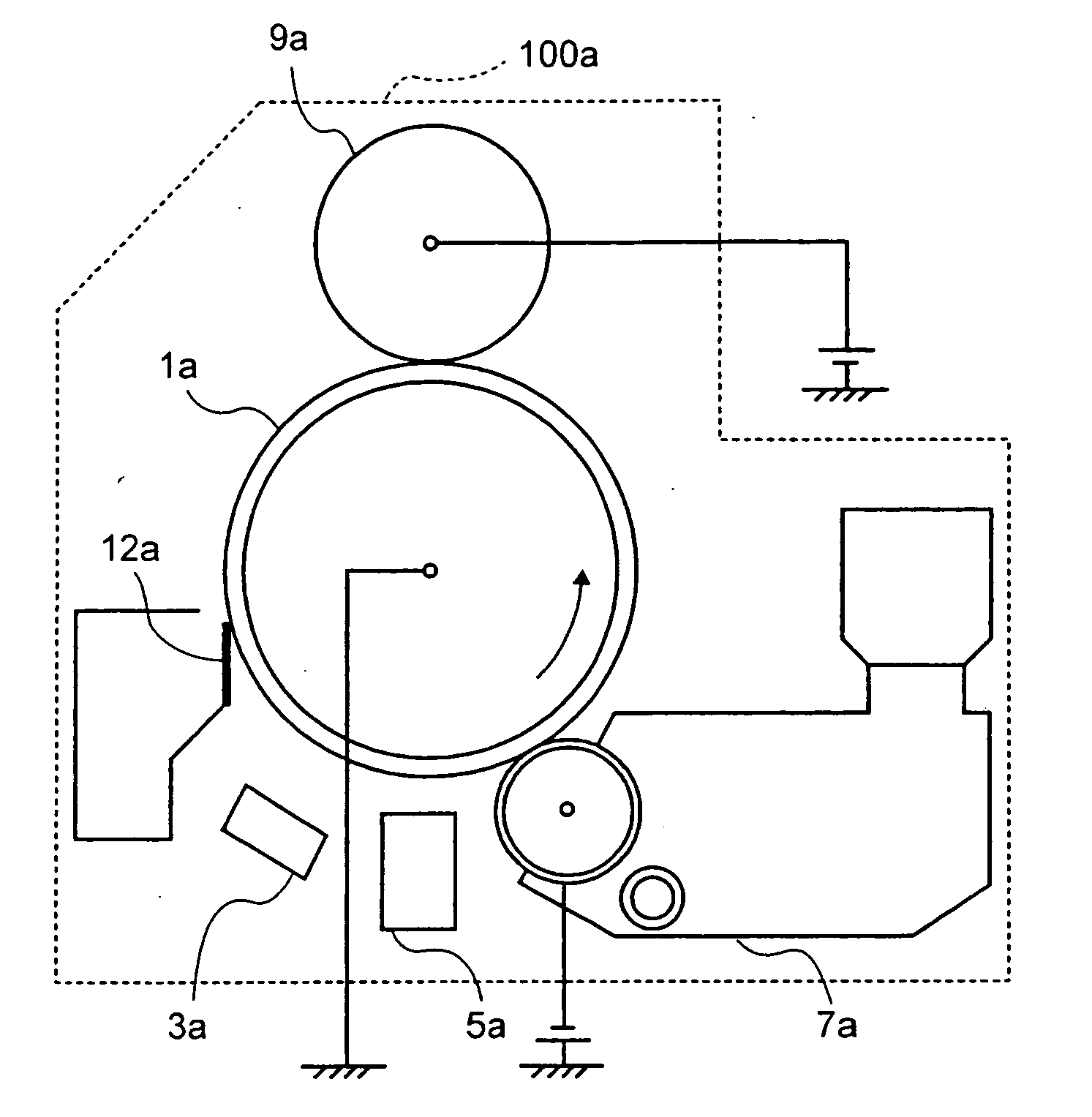Image forming apparatus and image forming method
a technology of image forming apparatus and forming method, which is applied in the direction of electrographic process apparatus, instruments, optics, etc., can solve problems such as adversely affecting images, and achieve the effect of sufficiently and efficiently eliminating toners and forming clear images
- Summary
- Abstract
- Description
- Claims
- Application Information
AI Technical Summary
Benefits of technology
Problems solved by technology
Method used
Image
Examples
third embodiment
[0081] In the third embodiment, an amount of toner containing paper dust and other color toners mixing into second to fourth processing units 100b to 100d is decided based on a difference between a toner area formed by an upstream processing unit and a toner image area formed by it's own.
[0082] This will be explained taking second processing unit 100b as an example. First, a area of a toner image formed in first processing unit 100a. This area may be obtained by directly taking a picture using a CCD or other means and also, from an electrostatic latent image formed on photosensitive drums 1b to 1d.
[0083] A area of a toner image that is to be formed in second processing unit 100b is obtained from a area of an electrostatic latent image drawn by exposure unit 5b on photosensitive drum 1b.
[0084] As an area of toner images formed by first processing unit 100a is wider, toner to get into second processing unit 100b of a developing device increases more in quantity. In portions where t...
fourth embodiment
[0087] In the fourth embodiment, a high density toner image such as a solid image is developed on the photosensitive drum when an image is not formed and mixed color toners are carried out efficiently in addition to the discharging of developer by a relevant processing unit itself based on a toner density.
[0088] At this time, for example, when toner is discharged after forming a solid image in second processing unit 100b, in third processing unit 100c and fourth processing unit 100d at the downstream side, toner is transferred inversely to photosensitive drums 1c and 1d from a toner image formed in second processing unit 100b. In order to prevent this, the reverse transfer of toner is suppressed by reducing transferring current given to transfer units 9c and 9d of third processing unit 100c and fourth processing unit 100d when forming a solid mage for the purpose of discharging toner in second processing unit 100b.
[0089] Thus, the color toner mixing to third and fourth processing ...
fifth embodiment
[0090] Some of toners transferred inversely from a first formed toner image may be in the negatively charged state. In the fifth embodiment, a mechanism to prevent negatively charged inversely transferred other color toners from mixing in the developing device will be described.
[0091] In this embodiment, a processing unit 100e shown in FIG. 18 will be used for second processing unit 100b shown in FIG. 1.
[0092] Processing unit 100e is composed of a photosensitive drum 1e, a main charger 3e, an exposure unit 5e, a developing device 7e, a transfer unit 9e, an elastic roller 100e, a brush roller 102e, and a contract member 204e.
[0093] Elastic roller 200e applied with voltage of about −199V is kept in contact with photosensitive drum 1e between the transfer position and the charging position of photosensitive drum 1e as shown in FIG. 18. Further, brush roller 202e applied with +250V is brought in contact with this elastic roller 200e.
[0094] Potential at the portion of photosensitive ...
PUM
 Login to View More
Login to View More Abstract
Description
Claims
Application Information
 Login to View More
Login to View More - R&D
- Intellectual Property
- Life Sciences
- Materials
- Tech Scout
- Unparalleled Data Quality
- Higher Quality Content
- 60% Fewer Hallucinations
Browse by: Latest US Patents, China's latest patents, Technical Efficacy Thesaurus, Application Domain, Technology Topic, Popular Technical Reports.
© 2025 PatSnap. All rights reserved.Legal|Privacy policy|Modern Slavery Act Transparency Statement|Sitemap|About US| Contact US: help@patsnap.com



